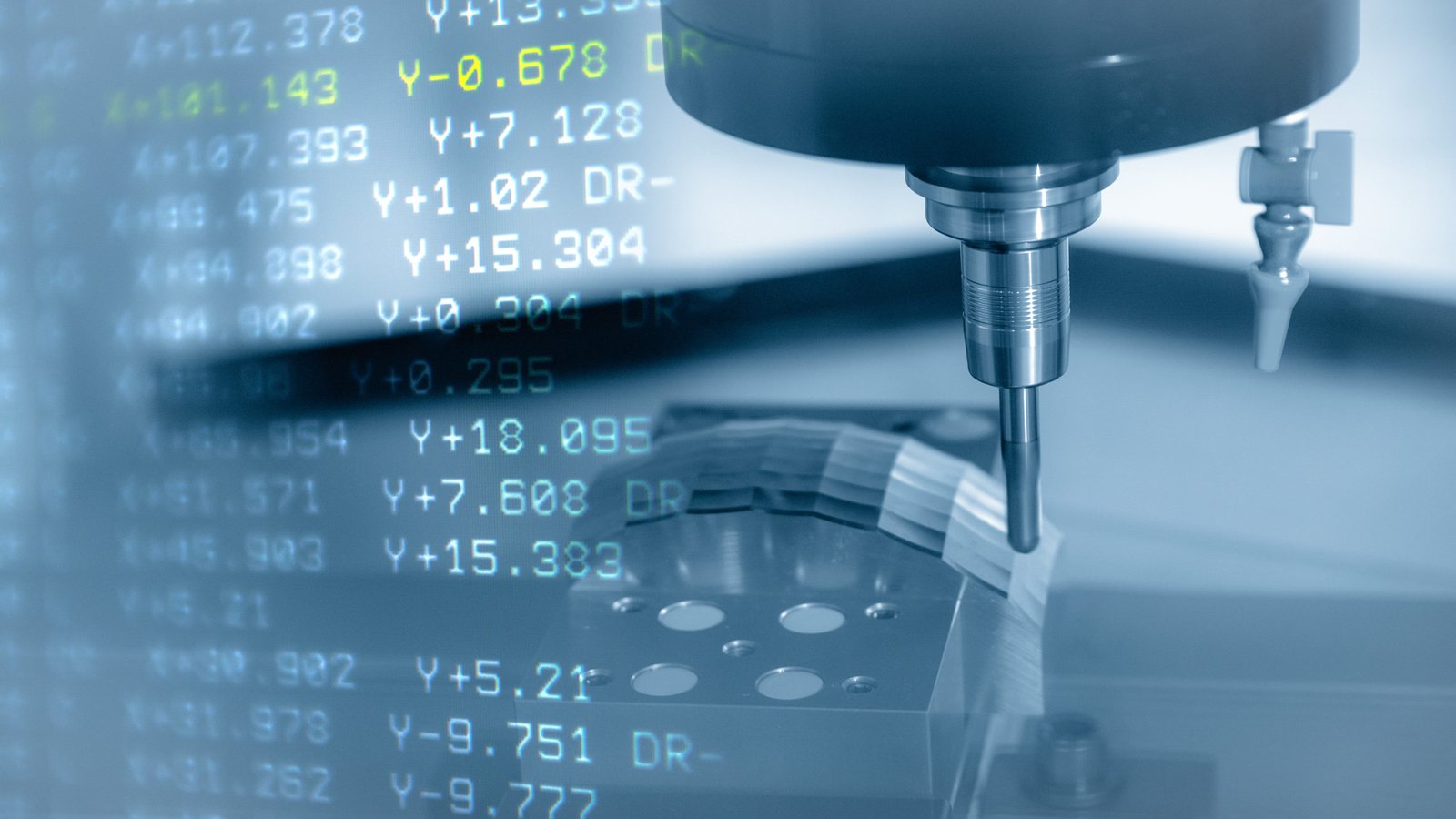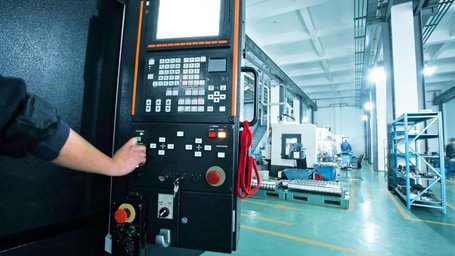CNC programming, short for Computer Numerical Control programming, stands as the cornerstone of modern manufacturing, shaping industries with its precision and efficiency. CNC programming plays a crucial role in modern manufacturing processes, offering precise control over machinery to produce intricate parts and components.
But what exactly is CNC programming, and how does it function? Delve deeper into the realm of CNC to unlock its secrets and significance.
What is CNC Programming?
CNC programming involves the conversion of a 3D CAD (computer-aided design) model into a series of machine-readable commands. These instructions dictate various parameters such as which cutting tools to utilize, the feed rate, and the precise tool movements required to fabricate the final part.
Essentially, CNC programming is the art of crafting instructions for cutting tools. CNC programmers typically employ CAM (computer-aided manufacturing) software to generate CNC programs, although for simpler components, they may manually input the CNC code.

What Codes Are Utilized in CNC Programming?
CNC programming relies on task-specific codes denoted by various letters of the alphabet, dictating the actions of the machine tool in material removal from the raw stock. Collectively termed “G-codes,” these instructions encompass a range of coded directives crucial for machining a part successfully.
Though the term “G-code” technically pertains to the “geometry” of the part, it is used broadly to encompass all necessary coded instructions. Here are some common types of CNC codes:
- D-Codes: These pertain to the tool offset of the CNC machine, indicating either the distance from the tool’s center line to its cutting edge or how far the tool extends from its holder.
- F-Codes: Representing feed rates, these codes dictate the varying speeds at which the tool should move during cutting operations.
- G-Codes: Primarily addressing geometry, G-codes instruct the machine on starting and stopping points and the movements required between them.
- M-Codes: Covering miscellaneous functions like coolant and spindle control, M-codes encompass non-geometric actions.
- N-Codes: Identifying lines or blocks of machine code, N-codes aid in organizing manually written CNC code, though they are often unnecessary for CAM-generated code.
- S-Codes: These codes govern speed, indicating desired tool spindle speeds at different stages of the machining process.
- T-Codes: Used to identify the tool designated for machining specific features on the workpiece.
>>> Read more: https://matec-vn.com/selecting-cnc-machining-service-provider/
How to Perform CNC Coding?
Mastering CNC coding entails familiarity with CNC machining fundamentals, CAD/CAM software, and the G-code instruction language. Knowing which CNC tools are appropriate for specific features and understanding material behavior during cutting are pivotal for optimizing tool paths and feed/speed settings during automated operations.
Additionally, comprehension of CAM software functionality and programmer requirements is essential. Here are the general steps for CNC coding:
- Export 3D Model: Begin by exporting the CAD model into CAM software. Some CAD systems offer integrated CAM capabilities, eliminating the need for export.
- Create Tool Paths: Convert the CAD model into tool paths, either manually (suited for simpler parts) or automatically using CAM software. Tool selection should align with required part features and available tooling.
- Verify Tool Paths: Ensure the accuracy of tool paths to prevent machine collisions with the workpiece or fixtures. This verification can be manual, automated (via CAM software simulation), or using third-party tool path verification software.
- Download Code to CNC Machine: Input the G-code into the CNC machine. This can be achieved via a portable storage device like a flash drive or by directly downloading the code to the machine through a local network connection.

What CNC Programming Software is the Best?
Determining the best CNC programming software depends on the specific application requirements. Advanced software options offer extensive settings and analysis capabilities for finely optimizing the machining process, while simpler alternatives focus on essential settings. Below are some of the top CNC programming software packages available:
- Mastercam: Predominantly a CAM package with some CAD functionality, Mastercam boasts over 30 years of industry experience. It’s renowned for its power and user-friendly interface, making it a preferred choice among CNC programmers.
- Vectric: Designed explicitly for CNC routing and engraving tasks, Vectric offers a range of specialized software packages such as Aspire, VCarve, and Cut2D, tailored to meet various machining needs.
- Meshcam: Ideal for beginners due to its straightforward interface, Meshcam provides efficient CAM capabilities, suitable for programming simple parts while still catering to the needs of seasoned experts.
- Fusion 360®: A CAD/CAM hybrid program, Fusion 360® enables seamless creation of CAD models followed by CNC code generation within a single software package. It combines user-friendliness with advanced features, catering to both novice and expert users.
- Solidworks®: Solidworks® offers a CAD/CAM hybrid approach, with its CAM module available as an add-on. Though potentially costly, Solidworks® CAM boasts robust functionality and a broad feature set, making it a powerful choice for CNC programming tasks.

FAQ
What is the role of a CNC programmer in the manufacturing process?
The role of a CNC programmer in the manufacturing process is crucial for ensuring the efficient and accurate operation of CNC machines. CNC programmers are responsible for translating design specifications and requirements into a series of instructions, known as CNC code or G-code, that the CNC machine can understand and execute.
They use CAD/CAM software to create toolpaths, select appropriate cutting tools, determine speeds and feeds, and optimize machining processes to achieve the desired results.
Additionally, CNC programmers troubleshoot any issues that arise during machining, such as tool breakage or dimensional inaccuracies, and make adjustments to the program as needed to ensure quality and efficiency in production.
Overall, CNC programmers play a vital role in driving productivity and maintaining precision in the manufacturing process.
What types of tools are commonly used in CNC machining?
Commonly used tools in CNC machining include end mills, drills, taps, reamers, boring bars, and countersinks. These tools are utilized for various cutting, drilling, and finishing operations to shape raw material into finished parts according to design specifications.
Additionally, specialized tools such as ball mills, chamfer mills, and thread mills may be employed for specific machining tasks, depending on the complexity of the part and the desired surface finish. The selection of tools is based on factors such as material type, part geometry, tolerance requirements, and production efficiency.
What is the function of a CNC controller?
The function of a CNC controller is to interpret the CNC program, typically written in G-code, and convert it into precise movements and actions executed by the CNC machine. The CNC controller acts as the brain of the machine, coordinating the motion of various axes, spindle speeds, and tool changes according to the instructions provided in the program.
It communicates with the servo motors, drives, and other components of the CNC machine to ensure accurate positioning, cutting, and machining operations. Additionally, the CNC controller may include features such as tool and workpiece measurement, error detection, and feedback mechanisms to enhance the efficiency and reliability of the machining process.
Conclusion
CNC programming serves as the backbone of modern manufacturing, enabling the precise and efficient production of intricate parts and components. Through the conversion of 3D CAD models into machine-readable instructions, CNC programming dictates every aspect of the machining process, from tool selection and toolpaths to feed rates and spindle speeds.
Whether through manual input or advanced CAM software, CNC programmers play a vital role in translating design intent into tangible results on the shop floor. By harnessing the power of CNC programming, manufacturers can achieve unparalleled accuracy, repeatability, and productivity, driving innovation and competitiveness in today’s dynamic industrial landscape.
